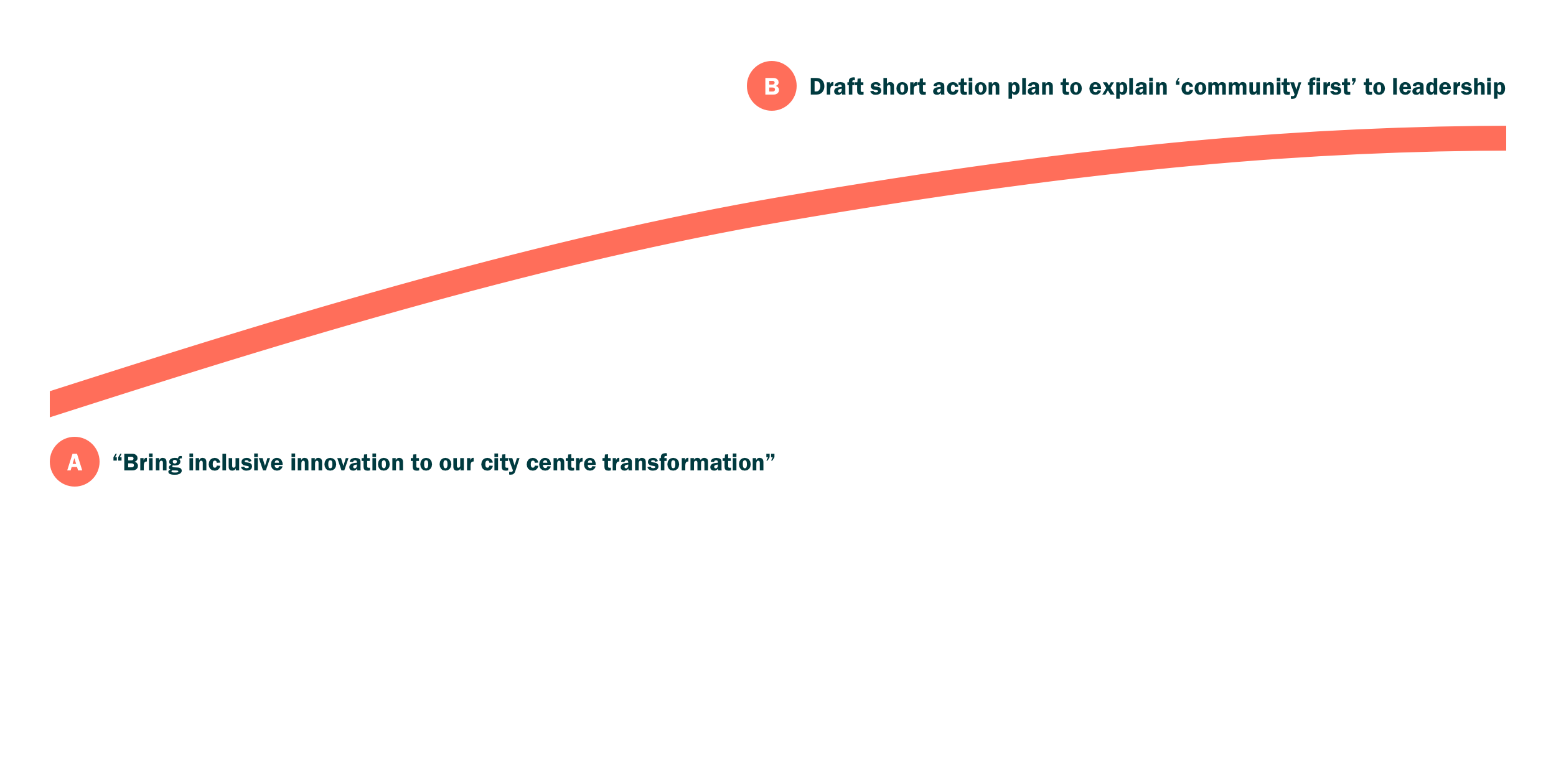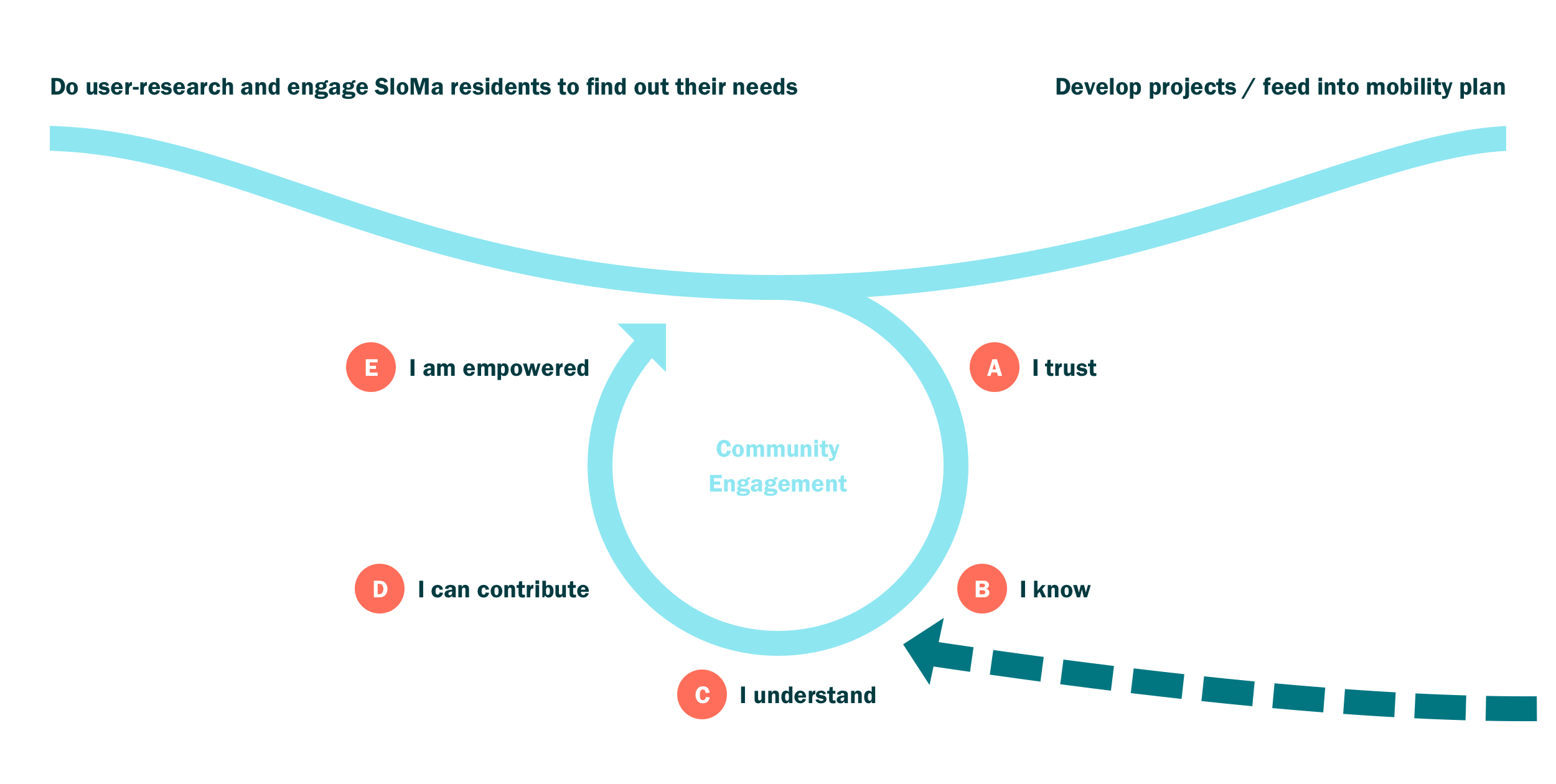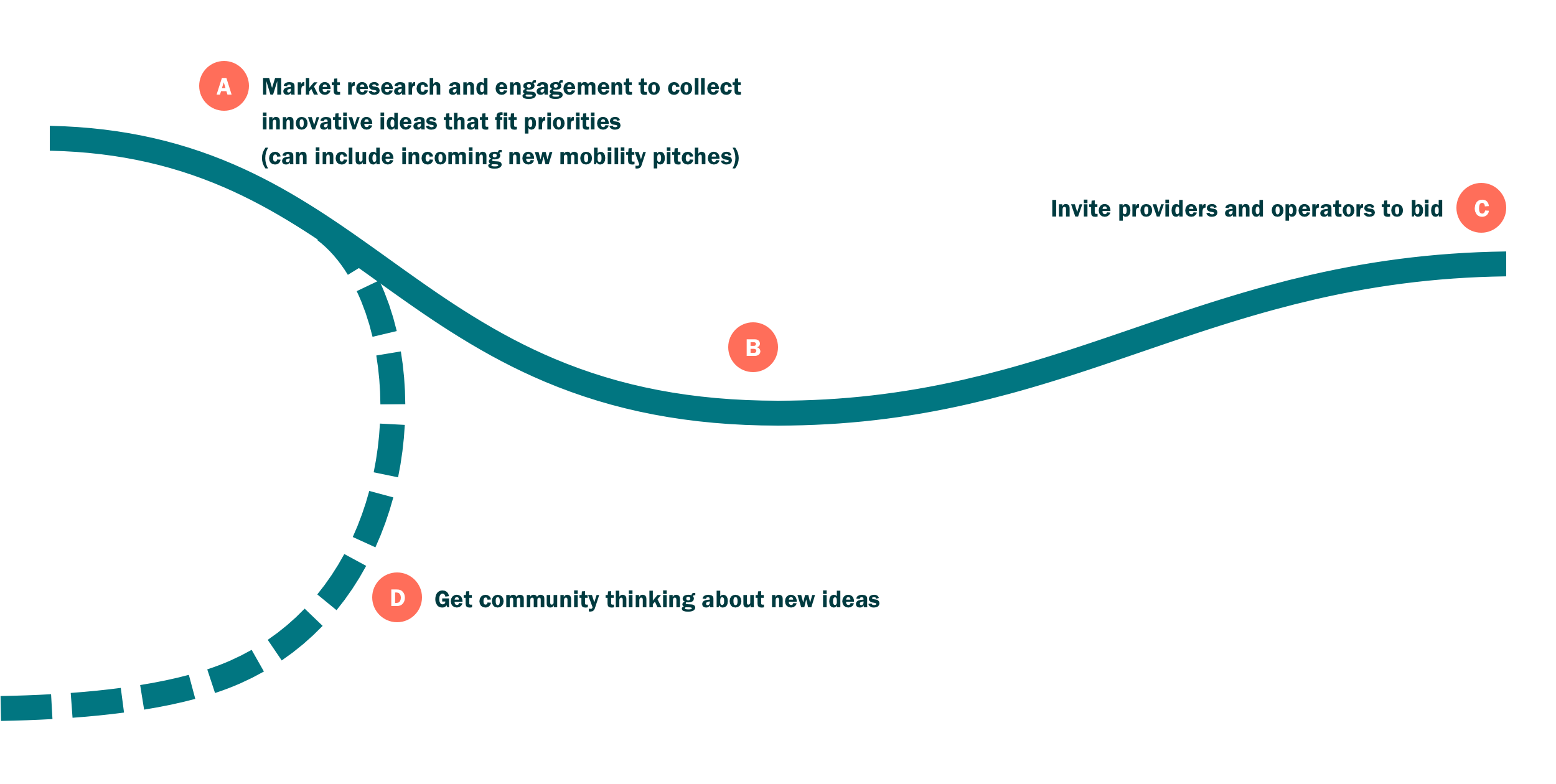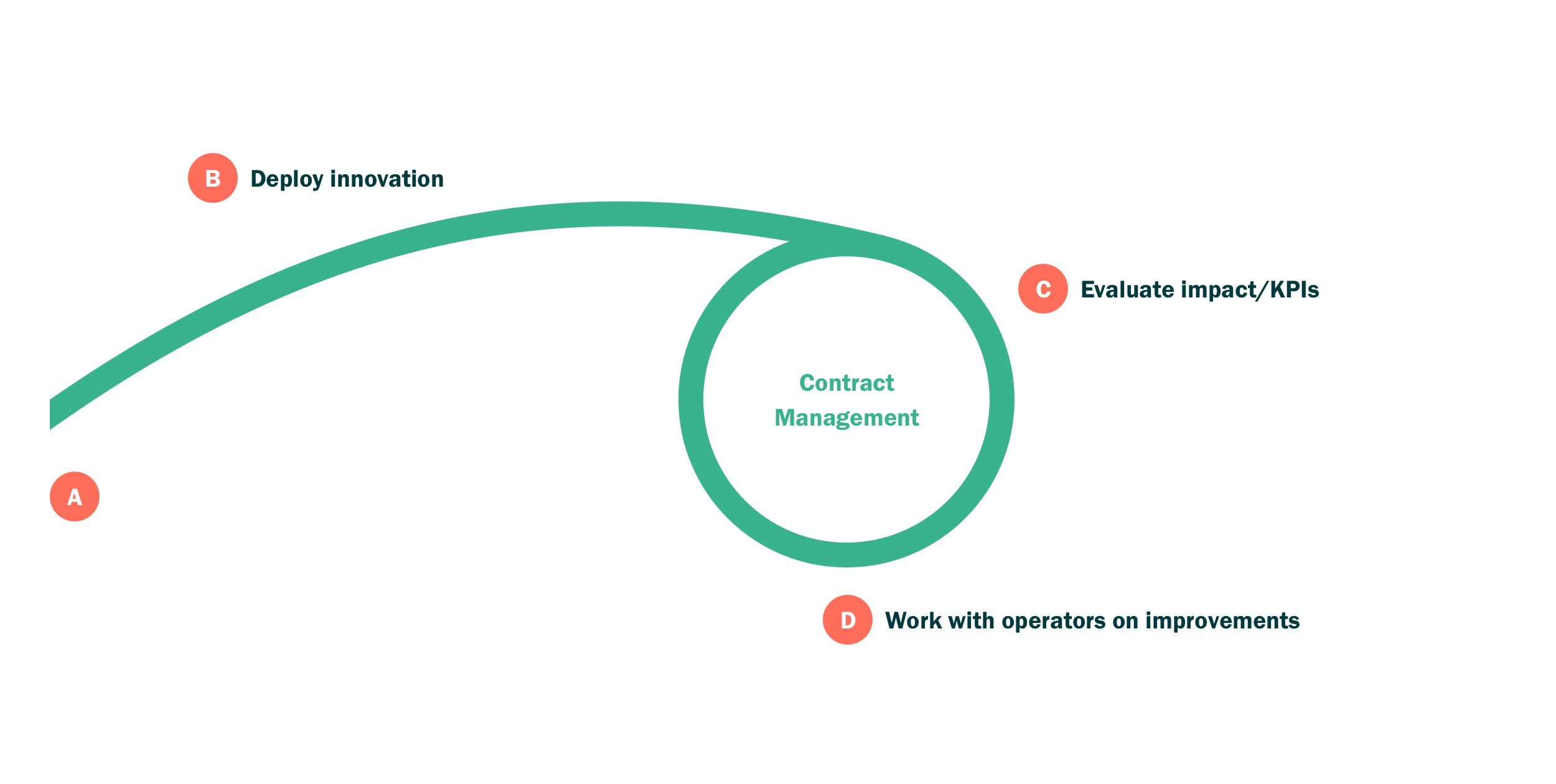I have a new mobility project in the pipeline around which I want to maximize community organizing, participation and empowerment.
“I am responsible for bringing innovative solutions to our mobility transformation project, a 10-year plan to make the city center more connected, healthier, safer and playful.”
City Council is excited about innovations that are on the horizon, from micromobility to electric and autonomous vehicles. These innovations could create new job opportunities in a clean and vibrant inner city economy, while offering opportunities for local startups
City Council is worried about creating a plan that is not future-proof, does not improve historic inequities (especially for SoMa residents), undermines economic vitality for small business by curtailing access for cars, is too expensive in capital or operating expenditures or leads to job losses.
Your goals for this assignment are:
- Find out what problems, needs and aspirations your city’s residents, especially those in SloMa actually have
- Research the new solutions and broader market dynamics that can meet our current and future needs
- Develop a flexible plan, knowing that every month new ideas and needs will emerge
Your strategy outline is:
- Draft a short action plan to explain ‘community-first’ to your city leadership
- Engage with SloMa residents and conduct user research to discover their needs and aspirations
- Conduct market research and get SloMa residents involved in thinking about future mobility
- Incorporate ideas into the mobility transformation project
- Formalize the role of market research and engagement as well as resident participation throughout the implementation of the plan




